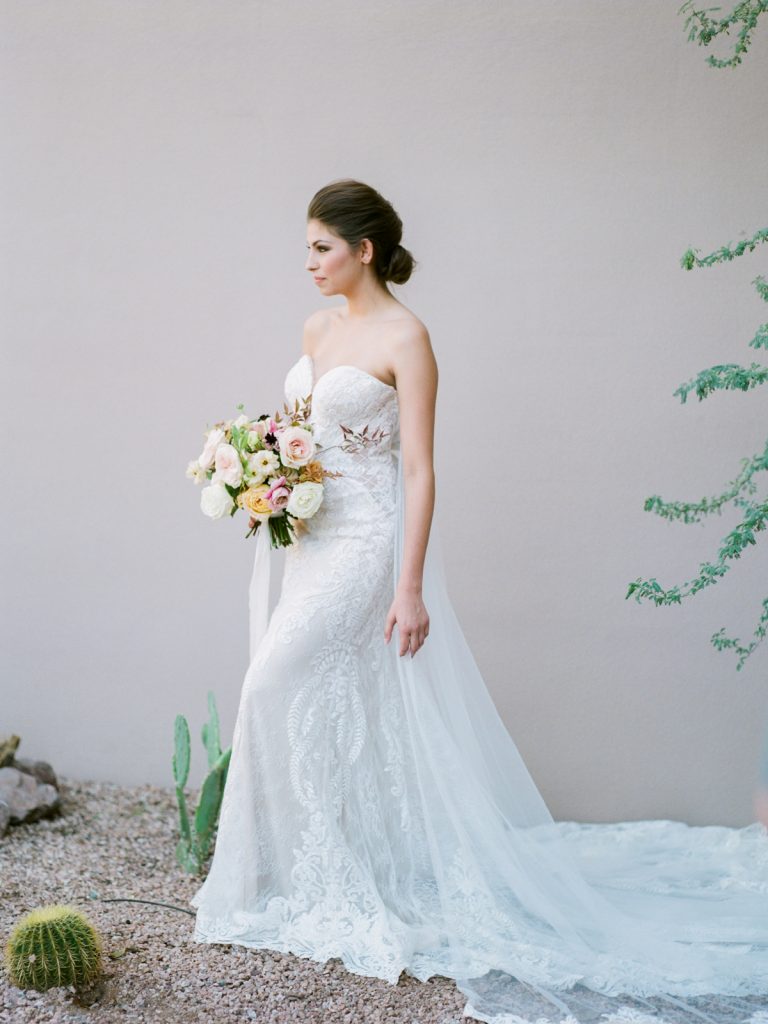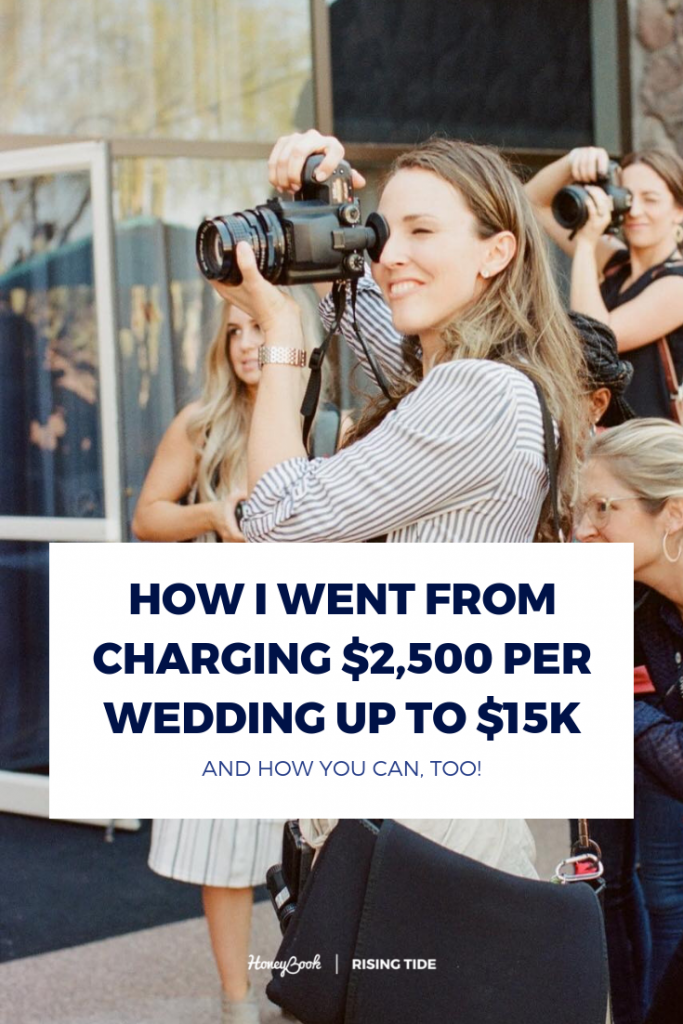
I became a mom 5 years ago, and quite suddenly, I knew my time was far more valuable than I had realized. So I set out on a journey to break into the luxury market and get paid better for the time I devoted to my business. I got intentional and super-focused on curating a brand message that would speak to a higher-end client. I managed to take my pricing from $2,500 to booking consistently at $5,000+ in one year, to now booking up to $15,000 (and counting)!
Want to know the very best part?! I did this shooting 10-12 weddings a year for my entire career. Which all goes to show, it’s really not about quantity or 10,000 hours of experience (because as a mom, I didn’t have that!). It’s about intentionality. Focus. And working the best possible way with the resources you have.
Crafting an exclusive, premium brand is not an opportunity anyone is outright excluded from. If you can do the intentional work it takes, it’s there for the taking! And don’t worry, I’m not here to simply share the results I’ve been able to produce in my own business, I’m going to give you insight into the process so you can do it, too! So keep reading!
Creating a luxury business is about the powerful interplay of 3 major elements:
- Brand
- Client Experience
- Pricing
Want to elevate your client experience with HoneyBook?<br>
Charity uses workflows, questionnaires, and client portals in HoneyBook to provide a smooth, stress-free experience for her luxury clients. Get 50% off your first year of HoneyBook from Charity, and start crafting a high-end experience from start to finish. Start free trial.
#1: Brand
If you don’t already know, a brand is the sum of feelings and messages associated with a business, communicating what it stands for (not just colors and logo). When it comes to crafting a luxury brand that’s going to ask its customers to pay a premium price for its services, here’s the key: craft a brand that’s not only representative of you (because we do know that’s important), but make sure it ultimately speaks to and appeals to a luxury client!
After shooting a few weddings that were more elevated, I started to notice a trend about the clients behind these particular events. The ones that were spending the most money on their weddings had greater amount of detail that went into their weddings (think more elaborate floral pieces), personalized touches that made their days unique, and were typically destination weddings that were full weekend experiences for their guests. The styles of these particular weddings were timeless and sophisticated.
So what did I do with that knowledge? I created a timeless visual brand that, in turn, I knew would appeal to this genre of client. I also started further curating the images and work I was showing by making sure to showcase more florals, brand names of shoes and dresses I knew my clients liked (and could afford), and ultimately sharing how each wedding was a unique experience for the couple and their guests.
Ultimately, I started speaking their language and curating a luxury, elevated perception via strategic content.
#2: Client Experience
Besides the above, here’s what I believe really separates a luxury business: a high level of customer service.
To understand a luxury experience, think for a moment about the customer service you receive being in a Target dressing room versus a Nordstrom dressing room.
At Target, you may or may not be escorted to a room by an associate. You rarely will be checked on, and if you need a new size, it’s up to you to make that happen. And it’s adequate, right? You expect to do a bit of work for yourself when you’re at Target.
But compare that experience to being at Nordstrom, where your clothes are always delivered to a designated dressing room before you even get to it because as clothes are starting to fill your arms, a sales associate notices and anticipates your need before you even ask. Once you’re actually in the dressing room, you’re checked on several times, and if you need a new size, it’s done for you!
That level of service is the distinction between an elevated, luxury service.
So how does this come through for me in servicing my clients?
Ultimately, I do anything and everything I can to make my client’s experience easy, and to meet their individual needs.
For ease, this is where I use HoneyBook in my business. I make sure that booking me is streamlined and easy via their contracts and invoicing system (that also gives them the option of autopay for future payments). I also run customized workflows for my clients that walks through a process that carefully anticipates their needs (hint: as high-end clients work with amazing wedding planners, connecting with the client less/using less of their time is actually more ideal!). HoneyBook is definitely the foundation for me to track and anticipate my client’s needs throughout the process.
Another specific example is that I also have a 3rd non-shooting assistant on my team for wedding days (in addition to me and a second photographer). As a film shooter, I already needed this assistant in order to help with loading my gear, but I took her responsibilities further in order to create an above-and-beyond experience for my clients. I make it her job to wait on the clients and anticipate their needs as the day goes on. She helps adjust dress and hair as needed, grabs water when things start getting warm (as always in AZ!), and helps direct family members to designated spots for family photos.
Anything you can do to elevate the experience of your clients will help separate you as a luxury-level service.
#3: Price
Now this is the fun one, right?!
When it comes to pricing, I think this is where this statement rings so true:
Perception=Value.
To drive this point home, let’s do a little exercise. Consider the price-points below:
Price A: $2,500
Price B: $10,000
How does your perception of value adjust when you read the prices above? You automatically assume $10,000 equates a higher level of value, right?!
Interestingly, it really might not be true that the $10,000 photographer produces better photographs than the $2,500 photographer (though I hope so!). What is most definitely true is that one service is automatically perceived as having more value than the another.
Price is something that you have to get right when it comes to reaching a client at this level. If you price yourself too low, there will be a distrust in value, and you may find yourself losing clients purely because the price is too low to command real respect (I found myself here!).
When determining what your prices should be, consider this: according to the Wedding Report, in 2018 the average wedding cost around $25k. Based on my experience in my own market, I believe a true luxury wedding starts around $100,000. So, if the cost of a luxury wedding is 4x the amount of an average wedding, it makes perfect sense that in servicing a client at this level (while providing incredible value!), that your price should be 4x the average as well (which sits at about $2,000 according to the Wedding Report).
Did that inspire you to build your own luxury brand? I hope so! In fact, I’m hosting the Elevate Workshop in a few weeks to provide each attendee with a personal roadmap on how to apply these principles to their own business. I want to help you maximize your time, charge premium prices, and photograph dream weddings—will I see you there?!



